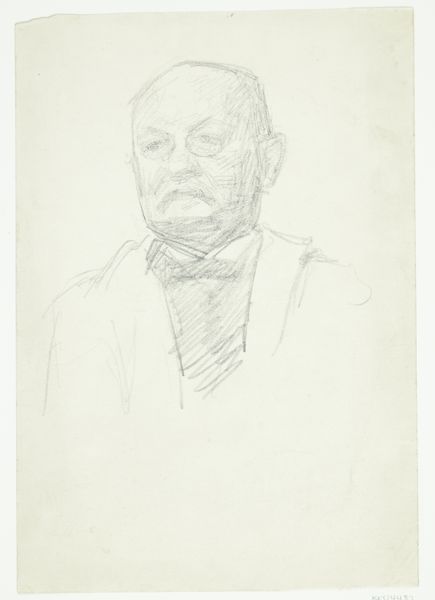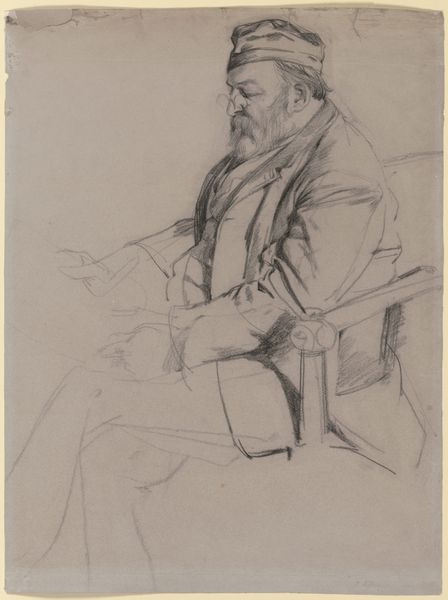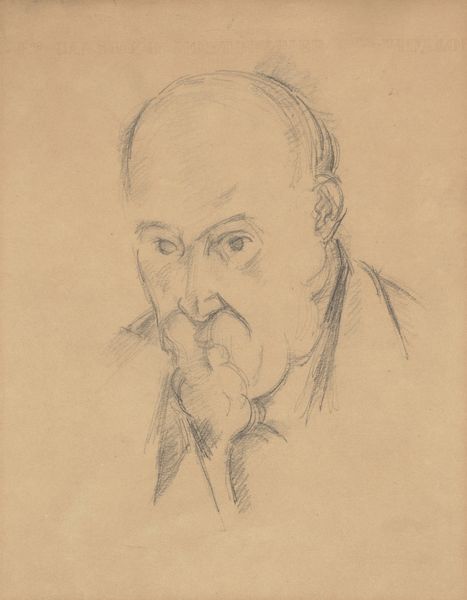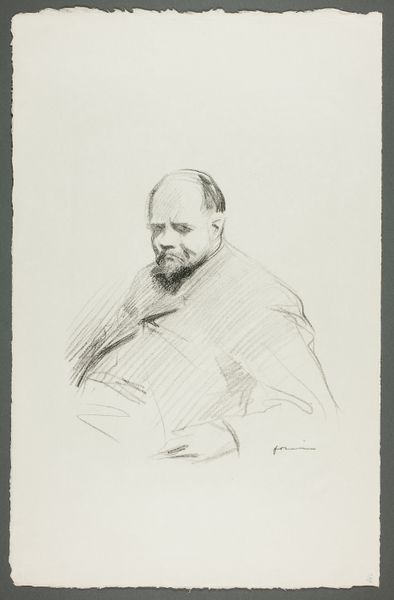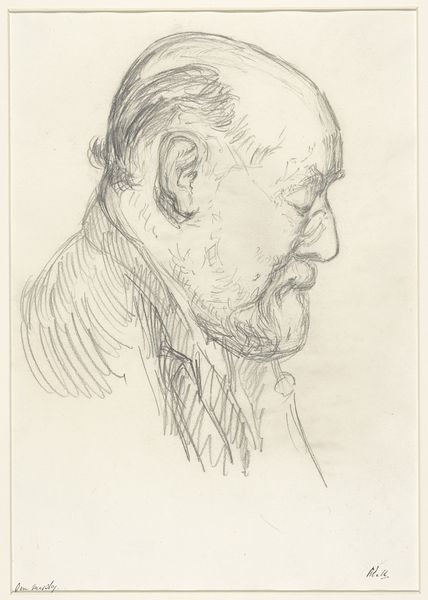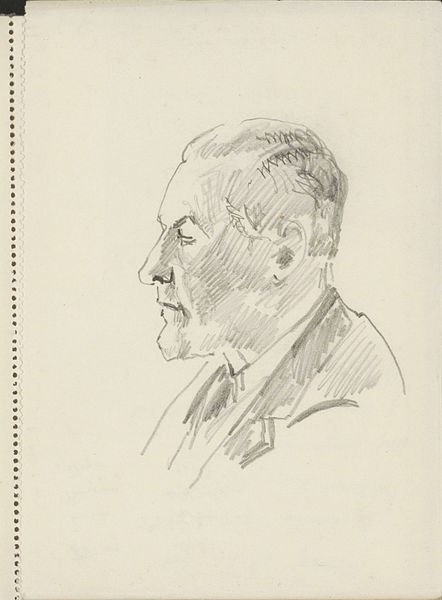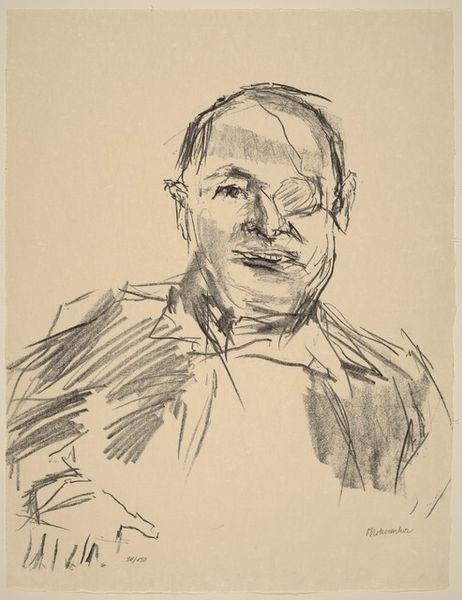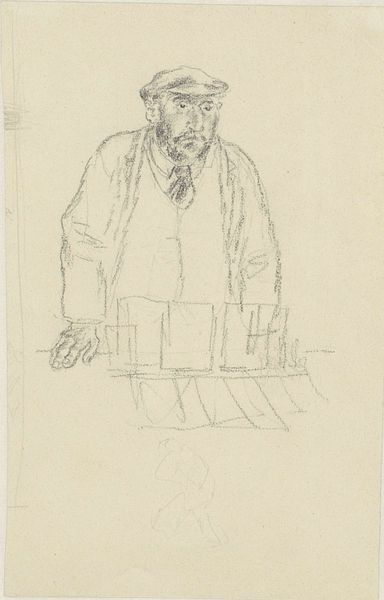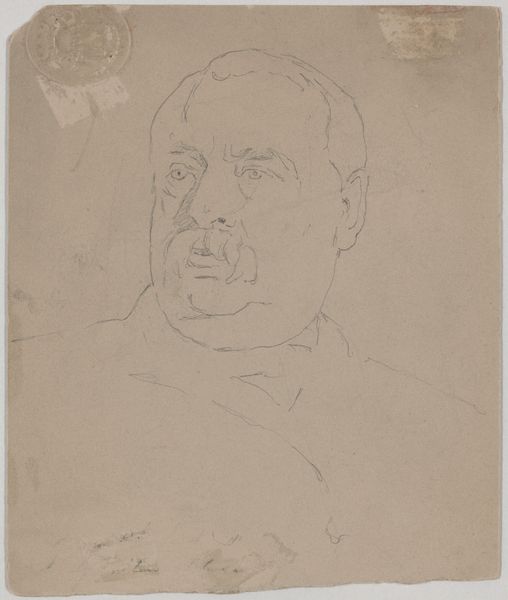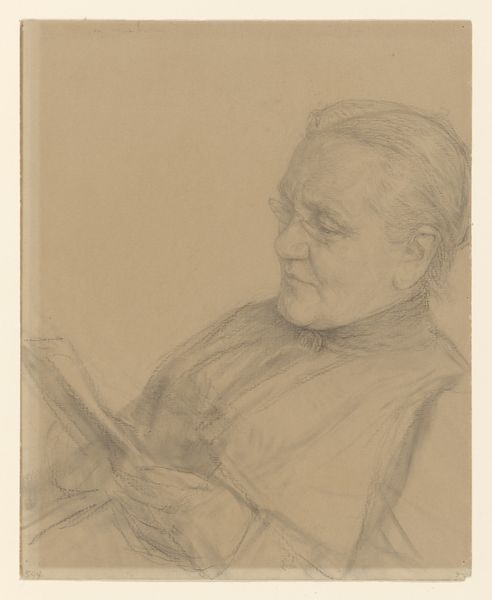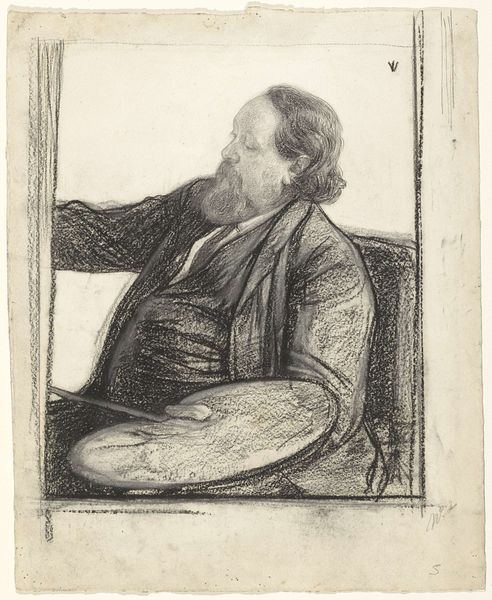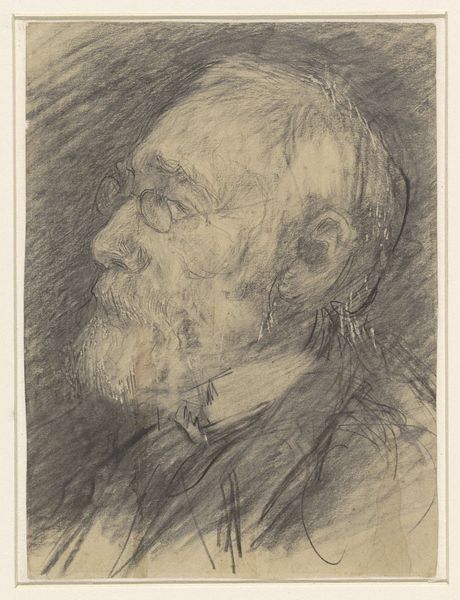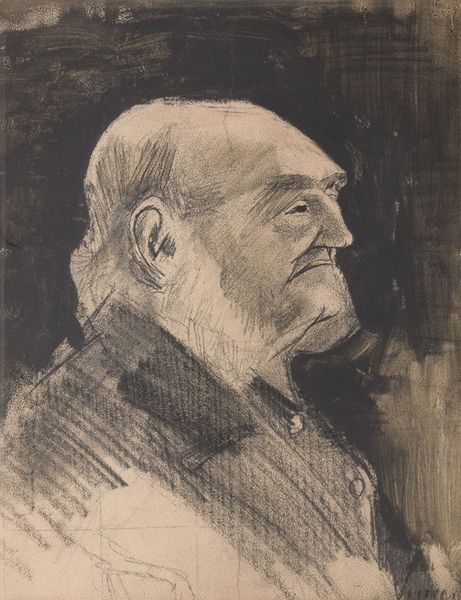
drawing, pencil
#
portrait
#
pencil drawn
#
drawing
#
toned paper
#
light pencil work
#
pencil sketch
#
personal sketchbook
#
idea generation sketch
#
pencil
#
sketchbook drawing
#
pencil work
#
storyboard and sketchbook work
#
academic-art
#
sketchbook art
#
realism
Dimensions: height 275 mm, width 220 mm
Copyright: Rijks Museum: Open Domain
Editor: This is Jan Veth’s "Portrait of Tak van Poortvliet," sketched between 1874 and 1925, using pencil on toned paper. It feels very intimate, like a glimpse into the artist’s sketchbook. What do you see in this seemingly simple portrait? Curator: Well, let's consider the means of production. The use of pencil, a readily available and inexpensive material, speaks to a democratization of art-making. How does the choice of such a humble material impact our understanding of portraiture, traditionally associated with wealth and status? Editor: That’s a fascinating point. So, you’re saying that the accessibility of the medium challenges the elite nature of portraiture? Curator: Precisely! The sketch-like quality further emphasizes the process. The visible lines, the unfinished areas… They reveal the artist's hand, the labor involved in creating the image. How might this emphasis on process affect our perception of the sitter, Tak van Poortvliet? Editor: Perhaps it humanizes him. We see him not as an idealized figure, but as someone observed and rendered through the artist’s effort. Does the toned paper play a role too? Curator: Absolutely. Toned paper provides a middle ground, saving the artist time and material in the pursuit of specific atmospheric tonalities, shifting the artistic labor toward pure mark making.. What are your thoughts? Editor: That's brilliant. I hadn’t considered the social implications of something as basic as the choice of drawing materials. I suppose I had a very romanticized view of portraiture. Curator: And it’s through this materialist lens that we can question those romantic notions and uncover the hidden narratives embedded within the work. It helps us appreciate art not just for its aesthetic value, but also as a product of labor and social context. Editor: Definitely, it reframes the entire conversation. Thanks, this gives me a whole new perspective on how to appreciate art!
Comments
No comments
Be the first to comment and join the conversation on the ultimate creative platform.
